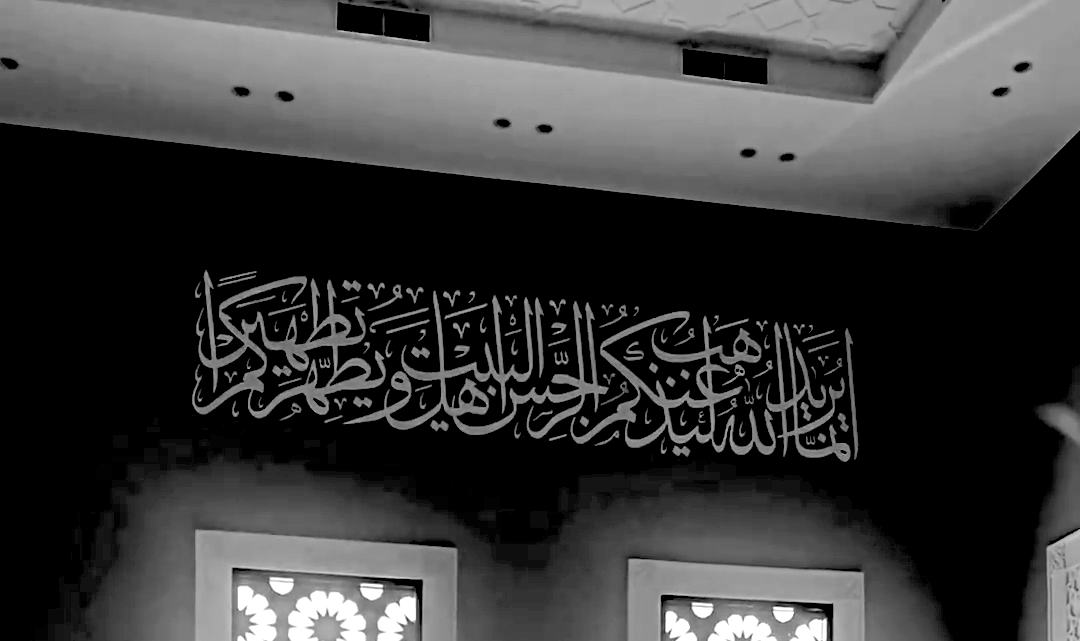
Arabic Calligraphy Wall Art & Custom Designs: Inspirations Behind My Work
Share
Arabic calligraphy has always been more than just art—it’s a spiritual language. In this post, I’m sharing a few of my designs that come alive through texture, light, and context.
One of the most meaningful milestones in my journey was creating Arabic calligraphy designs for a masjid in Kuwait. This project allowed me to bring the words of the Qur’an into a sacred space, where art and spirituality meet.
The verses chosen for the masjid reflected guidance, remembrance, and divine protection. I worked in classical Thuluth script, ensuring that every curve and connection of the letters complemented the architecture — flowing with the arches and domes of the space.
This project in Kuwait remains close to my heart because it showed me that Arabic calligraphy has the power to shape spaces, inspire hearts, and keep the words of Allah ever-present in daily life.
Not long after my Kuwait project, I had the honor of creating a design for a masjid in New Jersey, USA. This experience reminded me that the love for Arabic calligraphy and Qur’anic art knows no borders — it connects communities around the world.
After my work in Kuwait, I was blessed with the opportunity to create a design for a masjid in New Jersey, USA. The chosen verse was Surah Ash-Shams, a powerful chapter that speaks of the sun, the soul, and the eternal balance established by Allah. For this piece, I created a circular composition — a shape that symbolizes wholeness, perfection, and the never-ending cycle of divine creation.
Designing in a circle presented both a challenge and an opportunity. The flow of the calligraphy had to remain balanced, legible, and harmonious while following the curve of the circle. I worked carefully to ensure that the Thuluth script maintained its elegance as it curved, creating a seamless connection from beginning to end.
When placed in the masjid, the circular design radiated like a sun itself — perfectly in tune with the surah’s message. It became a focal point within the prayer hall, reminding worshippers of the divine signs around us and within us. For me, it was a humbling moment, seeing my calligraphy transform into a spiritual symbol that touched hearts far from where I began.
Another special project for me was designing Ayatul Kursi in a fully connected vector style. Ayatul Kursi, the Throne Verse, is one of the most widely recited verses in the Qur’an — cherished for its reminder of Allah’s eternal knowledge, power, and protection. Bringing this verse into calligraphy has always been a way for Muslims to surround themselves with faith and reassurance.
Instead of creating a traditional wall painting, I chose a connected vector approach. This allowed every letter of the verse to flow seamlessly into the next, symbolizing the unbroken unity of Allah’s words. The vector style also made the design scalable — equally stunning whether displayed as a large wall art piece in a living room or as a smaller framed print.
The clean, precise curves of the connected calligraphy gave the design a modern elegance, while the sacred verse anchored it in timeless meaning. For many who viewed it, the design felt alive — not just as decoration, but as a constant reminder of divine protection within their space.
For me, working on Ayatul Kursi in this style was a step forward in merging classical inspiration with digital precision. It reaffirmed my belief that Arabic calligraphy can adapt to every era, while always carrying the same eternal message.
One of my most meaningful wall art designs combined Surah Al-Falaq and Surah An-Nas in a connected vector style. These two short chapters of the Qur’an are recited daily by Muslims seeking Allah’s protection from harm, envy, and unseen evils. Together, they form a powerful reminder of trust and refuge in the Creator.
I chose a connected vector style to emphasize flow and unity. Each letter and word was carefully linked to the next, forming a continuous rhythm across both surahs. This design approach gave the verses a modern, refined look, while still maintaining the depth and elegance of classical calligraphy.
When displayed as wall art, the combined design creates a strong spiritual presence. The flowing composition represents divine protection as an unbroken shield, surrounding the home and those within it. Many viewers felt that the connection between the two surahs in one artwork gave the piece even more strength and harmony.
For me, this project was not just about aesthetic beauty, but about capturing the essence of the Mu‘awwidhatayn — verses that have comforted hearts and guarded believers for generations. Transforming them into connected vector wall art allowed me to honor their timeless role while presenting them in a style that speaks to today’s spaces.
Each of these projects — from masjid installations to wall art for homes — has been a reminder that Arabic calligraphy is more than design; it is a living connection between faith, art, and space. Whether flowing across the walls of a masjid or forming a centerpiece in a home, every curve and line carries meaning. My hope is that these works continue to inspire reflection, bring beauty to sacred and personal spaces, and keep the timeless words of the Qur’an alive in our daily lives.









